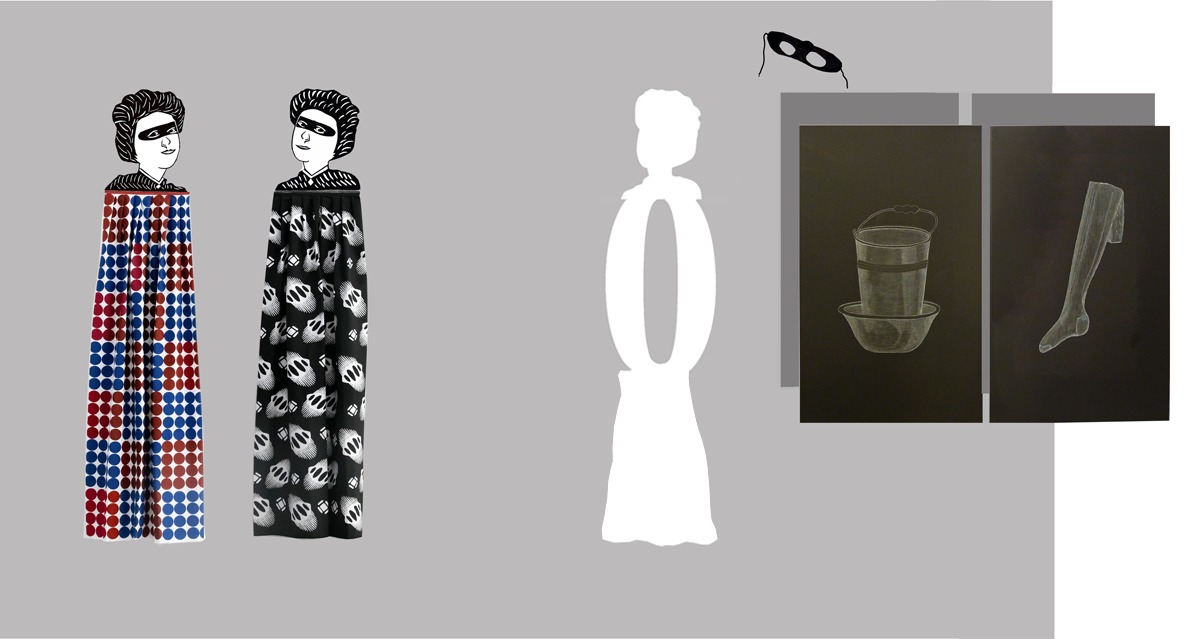Ulrike Grossarth
gibt es ein grau glühend?...
11 Feb - 06 Jun 2022

Ulrike Grossarth, Esther und Ruth / merchants unmasked, Berlin / Lublin 2017–2019. Courtesy Ulrike Grossarth

Ulrike Grossarth, gibt es ein grau glühend?..., Exhibition view, Badischer Kunstverein, Karlsruhe 2022. Photo: Stephan Baumann, bild_raum

Ulrike Grossarth, gibt es ein grau glühend?..., Exhibition view, Badischer Kunstverein, Karlsruhe 2022. Photo: Stephan Baumann, bild_raum

Ulrike Grossarth, gibt es ein grau glühend?..., Exhibition view, Badischer Kunstverein, Karlsruhe 2022. Photo: Stephan Baumann, bild_raum

Ulrike Grossarth, gibt es ein grau glühend?..., Exhibition view, Badischer Kunstverein, Karlsruhe 2022. Photo: Stephan Baumann, bild_raum
The Badischer Kunstverein is pleased to present Ulrike Grossarth (*1952, Oberhausen) in the largest retrospective in Germany to date. The exhibition ranges from her sculptural, installative works of the 1980s and 1990s to the more recent projects, which revolve around the Schule von Lublin (School of Lublin). Originally active in the world of dance, Grossarth turned toward visual art in the 1980s—although the artist emphasizes that she is interested less in producing artworks then in developing forms and methods that enable an opening perception. In her early works, for example, Grossarth was preoccupied with visualizing economic concepts and fictive exchange activities, which she processed performatively in the so-called “public exercises”.
Later, Grossarth turned her attention toward Central and Eastern European intellectual history, and to the lost history of Jewish life of Lublin/Poland. Infuenced by the stylistic idiom of the Encyclopédie by Diderot and d’Alembert and by Hannah Arendt’s conception of action as “a factor that still remains to be developed in culture,” she has arrived at a singular method of artistic research. Grossarth’s artistic practice reflects the formulation of a future concept of art and culture from the sources of Jewish thought and teaching tradition, and her interests focus on anthropological themes. This includes the study of the Talmud, which she practices in various learning groups.
The exhibition presents selected work ensembles from a variety of working periods, including Bau II, rot/grün-grau (1999), and dedicates an entire exhibition level to the Lublin projects. In Schule von Lublin (since 2014), Ulrike Grossarth extends her researches into Jewish history in the direction of concrete teaching activity, and the project Stoffe aus Lublin (2007/10) embodies her intensive preoccupation with the archive of the photographer Stefan Kiełsznia.
Later, Grossarth turned her attention toward Central and Eastern European intellectual history, and to the lost history of Jewish life of Lublin/Poland. Infuenced by the stylistic idiom of the Encyclopédie by Diderot and d’Alembert and by Hannah Arendt’s conception of action as “a factor that still remains to be developed in culture,” she has arrived at a singular method of artistic research. Grossarth’s artistic practice reflects the formulation of a future concept of art and culture from the sources of Jewish thought and teaching tradition, and her interests focus on anthropological themes. This includes the study of the Talmud, which she practices in various learning groups.
The exhibition presents selected work ensembles from a variety of working periods, including Bau II, rot/grün-grau (1999), and dedicates an entire exhibition level to the Lublin projects. In Schule von Lublin (since 2014), Ulrike Grossarth extends her researches into Jewish history in the direction of concrete teaching activity, and the project Stoffe aus Lublin (2007/10) embodies her intensive preoccupation with the archive of the photographer Stefan Kiełsznia.
